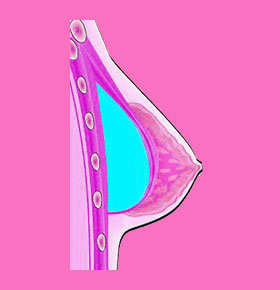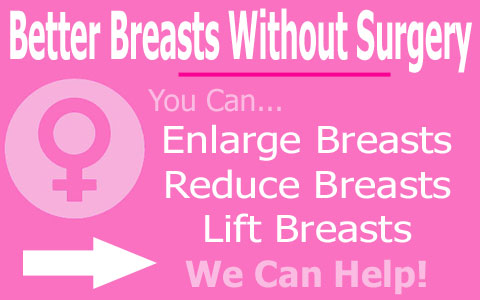
Choosing the correct breast implant placement is a vital part of designing a successful breast augmentation surgery. Breast implants are not simply placed haphazardly inside the body. They are purposefully and carefully located in one of four highly specific locations in the chest. Choosing the anatomical location which suits a woman best is a process which should be jointly decided by the patient and surgeon alike.
This examination of all the possible placements for breast implants will help women to make this difficult choice correctly.
Breast Implant Placement Locations
Breast implants can be placed into one of four locations inside the patient’s body:
Subglandular placement is achieved when the implant is located inside the breast mound, behind the glandular tissue, but in front of the chest muscles.
Subpectoral positioning, also called partial submuscular, involves placement of the breast implant partially under the pectoralis major muscle. The muscle usually covers the top two thirds of the implant, leaving the lower portion of the prosthesis free to enter the subglandular space.
Submuscular placement involves implanting the prosthesis under the chest muscles, fully covering the entire implant with layers of muscular tissue.
Subfascial placement involves positioning the implant over the chest muscles, but under the breast glands and fascia.
Implant Positioning Comparative Analysis
Subglandular usually allows for a more noticeable and palpable implant. This is especially true for women with little natural breast tissue. Capsular contracture is more common using this placement and mammography results are affected significantly. Subglandular placement gives the breasts a more natural movement, especially during vigorous exercise. It also does not interfere with athletic use of the chest muscles. The surgery is shorter and recovery time is faster than submuscular placements. Surgical complications and implant displacement are also less common in subglandular implantation procedures. Read more detailed information in our essay titled: breast implants over the muscle.
Submuscular placement is a more involved surgery with a longer and more painful recovery period. The implant might feel strange under the chest muscle and athletic women might suffer some reduction in muscular function. Capsular contracture rate is significantly reduced in submuscular placement and mammography results are more reliable. Submuscular placement might contribute to prosthesis rupture, especially if used with saline breast implants. Implants placed under the muscle have a greater chance of migrating to the edges of the torso, creating a wide, unnatural cleavage. Implants are less detectable by sight and touch when placed under the chest muscles. Submuscular Implants might move strangely during athletic activities, such as sports or dancing. See also breast implants under the muscle.
Subpectoral placement, also called dual plane breast implantation, is a compromise which works well for many women. A partially covered implant has a natural look and feel, especially in the cleavage area. The operation is still involved and requires considerable pain during recovery. The implant might feel odd or compressed during certain activities. The implant will often fall nicely, avoiding that “obviously enhanced” look and feel.
Subfascial implant placement is another compromise solution which works well for athletic women with small natural breasts. This placement allows the implant to sit on top of the muscle, which prevents problematic effects from vigorous muscular activity. The implant is placed subglandular, but also covered by a thin layer of strong tissue called fascia. This fascia helps to minimize implant movement and provide extra bodily tissue which helps to camouflage the implant within the breast.
Recommendations on Breast Implant Placement
Placement of your implants is a very individual and personal choice. Many cosmetic surgeons are asked which placement is best, but there is no clear answer to that question. The best answer can only be given to one patient at a time, since the ideal placement will be determined by that woman’s structure, lifestyle, expectations and other contributing factors.
The best bet is to discuss multiple placement options with your doctor and list the pros and cons of each, as they relate to your particular case. After getting a clear picture of the numerous options, you will have a much easier time choosing the perfect anatomical placement for your beautiful new breasts.
Remember that some placements work better with certain types of breast implant prosthesis.



